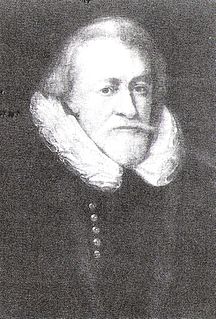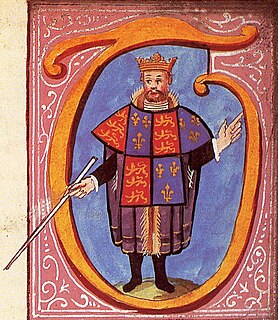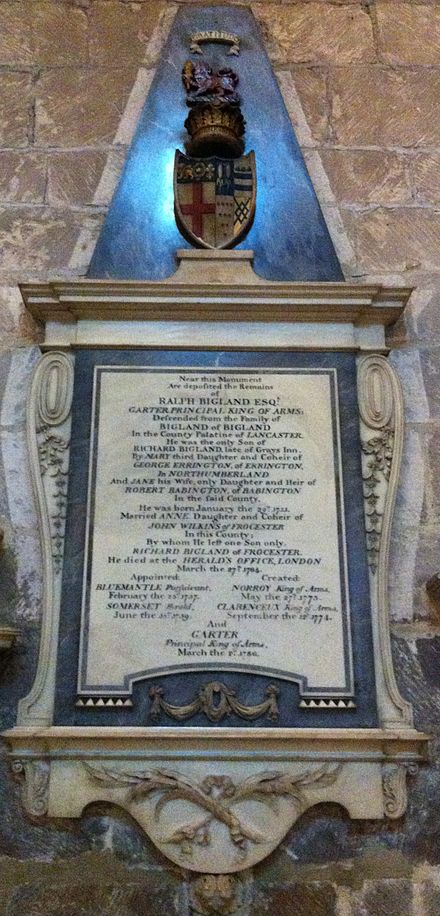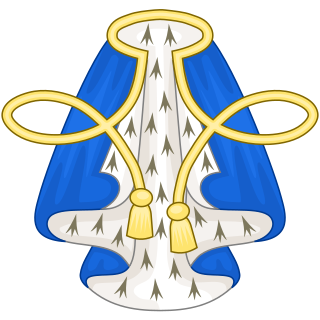
Sir John Bernard Burke, was a British genealogist and Ulster King of Arms, who helped publish Burke's Peerage.

Sir Albert William Woods was an English officer of arms, who served as Garter Principal King of Arms from 1869 to 1904. The Woods family has a strong tradition of service at the College of Arms. Albert Woods was the son of Sir William Woods, Garter King of Arms from 1838 until his death in 1842. Likewise, the grandson of Albert Woods was Sir Gerald Woods Wollaston, who also rose to the rank of Garter King of Arms and served there from 1930 until 1944.

Clarenceux King of Arms, historically often spelled Clarencieux, is an officer of arms at the College of Arms in London. Clarenceux is the senior of the two provincial kings of arms and his jurisdiction is that part of England south of the River Trent. The office almost certainly existed in 1420, and there is a fair degree of probability that there was a Claroncell rex heraldus armorum in 1334. There are also some early references to the southern part of England being termed Surroy, but there is not firm evidence that there was ever a king of arms so called. The title of Clarenceux is supposedly derived from either the Honour of the Clare earls of Gloucester, or from the Dukedom of Clarence (1362). With minor variations, the arms of Clarenceux have, from the late fifteenth century, been blazoned as Argent a Cross on a Chief Gules a Lion passant guardant crowned with an open Crown Or.

The Garter Principal King of Arms is the senior King of Arms, and the senior Officer of Arms of the College of Arms, the heraldic authority with jurisdiction over England, Wales and Northern Ireland. The position has existed since 1415.

Norroy and Ulster King of Arms is the King of Arms at the College of Heralds with jurisdiction over England north of the Trent and Northern Ireland. The two offices of Norroy and Ulster were formerly separate, but were merged in 1943. Norroy King of Arms is the older office, there being a reference as early as 1276 to a "King of Heralds beyond the Trent in the North." The name is derived from the French nord roi meaning "north king". The office of Ulster King of Arms was established in 1552 by King Edward VI to replace the older post of Ireland King of Arms, which had lapsed in 1487.

Sir Algar Henry Stafford Howard was a long-serving officer of arms at the College of Arms in London. He was the third consecutive Fitzalan Pursuivant of Arms Extraordinary to attain the highest rank at the College of Arms.

Sir George Rothe Bellew,, styled The Honourable after 1935, was a long-serving herald at the College of Arms in London. Educated at the University of Oxford, he was appointed Portcullis Pursuivant in 1922. Having been Somerset Herald for 24 years, he was promoted to the office of Garter Principal King of Arms in 1950, the highest heraldic office in England and Wales. He served in that capacity until his resignation in 1961. As Garter, Bellew oversaw the funeral of George VI, proclaimed the late King's daughter, Elizabeth II, as Queen and took a leading role in the organisation of her Coronation in 1953. After his retirement, Bellew was Secretary of the Order of the Garter and Knight Principal of the Imperial Society of Knights Bachelor. He lived for many years at Dower House in Old Windsor, Berkshire, but later moved to Farnham and died in 1993, aged 93.

Sir William Dethick was a long-serving officer of arms at the College of Arms in London. He was the son of Sir Gilbert Dethick and followed his father as Garter Principal King of Arms. Though he was adjudged a qualified armorist and antiquarian, Dethick's biography is notable for numerous instances of conflict with his colleagues and others.

William Bruges was an English officer of arms. He is best remembered as the first person appointed to the post of Garter King of Arms, which is currently the highest heraldic office in England.
John Writhe was a long-serving English officer of arms. He was probably the son of William Writhe, who represented the borough of Cricklade in the Parliament of 1450–51, and is most remembered for being the first Garter King of Arms to preside over the College of Arms. Writhe is also notable for the contention that it was he who developed the system of heraldic cadency employed by English officers of arms to the present day.

Sir Thomas Wriothesley was a long serving officer of arms at the College of Arms in London. He was the son of Garter King of Arms, John Writhe, and he succeeded his father in this office.

John Anstis was an officer of arms at the College of Arms in London.
Sir Christopher Barker was an officer of arms at the College of Arms in London.

Thomas Hawley was a long-serving officer of arms at the College of Arms in London. He began his career of royal service as a groom porter to Queen Margaret of Scotland from her marriage in 1503 until 1508. Although he may have been made Rose Blanche Pursuivant in the reign of King Henry VII, his first permanent heraldic appointment came in 1509.

Stephen Martin Leake was a numismatist and long-serving officer of arms at the College of Arms in London.
Sir George Nayler, KH FRS was a long-serving officer of arms at the College of Arms in London.
Barak Longmate was an English genealogist and editor, heraldic engraver and publisher.
Sir Ralph Bigland was an English herald. He was the son of Joseph Owen of Salford, Lancashire, and Elizabeth-Maria Owen.





























